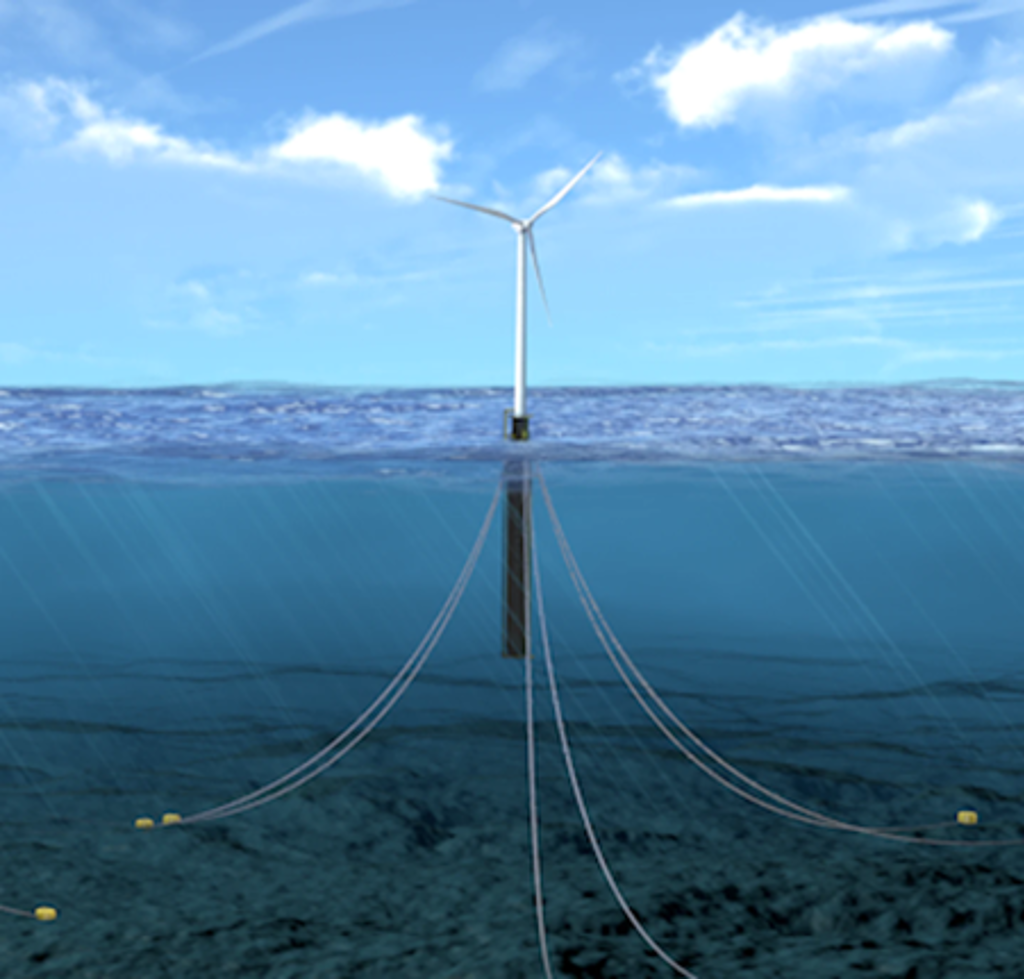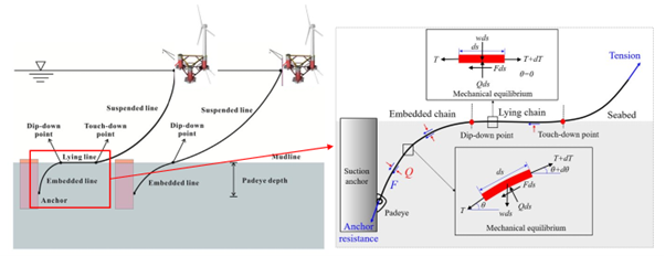Integrated analyses of mooring lines, soil and anchors for floating wind turbines
The main objective of this master thesis is to study the effect of performing fully integrated analyses of floating offshore wind turbines, mooring lines, and anchors, and especially the effects of including the interaction and deformations of the soil in these analyses.

As the development of offshore wind energy shifts to deeper waters, wind turbines need to be installed on floating structures and anchored to the seabed. The design of the mooring systems for these floating wind facilities has been primarily borrowed from the traditional offshore Oil & Gas industry.
The current modelling approach for these mooring systems assumes that the mooring lines are fixed to the seabed without accounting for that the mooring lines actually are embedded into soil and only consider hydrodynamic effects.
This may result in a complicated design process that requires multiple iterations between anchor and mooring analyses to determine the anchor geometry and locations, leading to a conservative design of the anchors.
The assignment
This project will use a macro-element model concept in integrated anchor-mooring line analysis for suction and fluke (drag) anchors. The purpose is to compare the line tension and inclination results at the connection point of the anchors (pad-eyes) from these integrated analyses with results where the mooring lines are fixed to the seabed.
This Master project will be part of Work Package 7 - Mooring and anchors in SFI BLUES led by NGI to develop novel, integrated analysis methodologies for the mooring systems of offshore floating infrastructures.
The project will be carried out with one of the industry partners in SFI BLUES.

Figure 1. Integrated analyses of mooring lines, soil and anchors for floating wind turbines.
Research tasks:
Literature review – floating wind anchoring systems, mooring analysis, suction anchors, fluke anchors, macro-element models, etc.
- Main task 1 – studying an existing model for a floating offshore wind turbine where the mooring lines are fixed at the seabed, using the computer code Sima/Riflex. Extract results of mooring line tension and motion at and slightly above the seabed.
- Main task 2 – Calculate the chain configurations from the seabed to the pad-eye of suction anchors using traditional limit equilibrium equations. These calculations give the line tension and inclination at the pad eye. Calculate the suction anchor's required dimensions (diameter and penetration depth) for a given soil profile.
- Main task 3 – Repeat the calculations in task 2 for a given fluke (drag) anchor.
- Main task 4 – MModelling the soil and anchors in Sima/Riflex using macro-models. Compare the results obtained by these analyses with the results obtained in tasks 1-3.odelling the soil and anchors in Sima/Riflex using macro-models. Compare the results obtained by these analyses with the results obtained in tasks 1-3.
